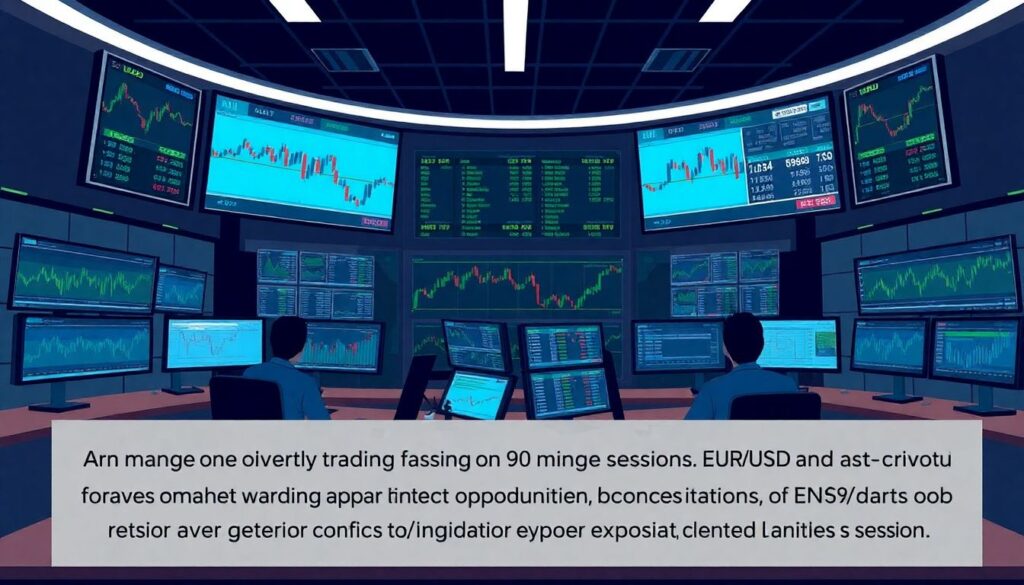Weekend Liquidity Optimization: How to Use Small Sessions
Liquidity has always been a critical factor in trading success, especially for active traders and algorithmic systems. As we move into 2025, with markets becoming more fragmented and 24/7 crypto trading reshaping traditional paradigms, optimizing liquidity during weekends is no longer optional — it’s a competitive advantage.
This article explores how to strategically use small trading sessions over weekends to enhance liquidity, reduce slippage, and maintain market presence during low-volume periods.
Why Weekend Liquidity Matters in 2025
Before 2020, weekends were considered off-hours for most financial markets. But the rise of digital assets, decentralized exchanges (DEXs), and global retail participation has changed that. Now, weekends can represent up to 18–22% of a weekly asset’s total volume — particularly in crypto, Forex, and synthetic markets.
Moreover, institutional players are beginning to test weekend strategies, especially in crypto derivatives and tokenized assets. Ignoring this window means forgoing both opportunity and control.
Case Study: BTC/USDT Weekend Spread Compression
In Q3 2024, a mid-sized crypto trading desk implemented micro-sessions on Saturdays from 10:00 to 12:00 UTC and Sundays from 17:00 to 18:30 UTC. Over three months, they reduced their average weekend spread from 0.42% to 0.18%, while increasing fill rate by 26%.
Understanding Small Sessions
Small sessions are short, controlled trading windows designed to inject targeted liquidity into quiet markets. These are not full trading days — think 60 to 120-minute bursts — with the goal of:
– Supporting internal book balance
– Capturing favorable pricing in thin markets
– Avoiding the risk of wide spreads or spoofing activity
Technical Setup for Small Sessions
To implement effective small sessions, you’ll need:
– Real-time liquidity monitoring tools (such as Kaiko or Coin Metrics)
– Automated order execution bots with smart routing
– Risk-adjusted exposure caps to avoid overcommitment
“`plaintext
Example: Configure your bot to scan top 5 books across DEXs every 5 seconds.
Set max order exposure to 0.5% of total portfolio per session.
Use TWAP or VWAP algorithms to smooth order flow.
“`
Step-by-Step: How to Deploy Small Sessions on Weekends

1. Analyze Historical Weekend Volatility
– Use at least 6 months of tick data
– Identify average spread, volume, and order book depth
2. Define Session Windows Based on Liquidity Pockets
– Look for mini-volume peaks (e.g., post-Asian close, pre-European open)
3. Select Assets with Predictable Weekend Behavior
– BTC, ETH, and major FX pairs like EUR/USD or USD/JPY are ideal
4. Set Conservative Risk Parameters
– Limit session duration, order size, and price deviation
5. Monitor and Adjust in Real Time
– Use latency-sensitive dashboards to track fill rate, slippage, and PnL
Real-World Example: Forex Micro Sessions

A London-based prop trading firm introduced two 90-minute sessions on Saturday evenings targeting EUR/USD and GBP/USD. Despite lower weekend liquidity, they achieved average returns of 0.12% per session with limited exposure, primarily by arbitraging between ECNs and dark pools.
Common Pitfalls to Avoid
– Overtrading illiquid pairs: Stick to assets with at least $100M daily volume
– Latency mismatch: Ensure your execution is colocated or edge-optimized
– Ignoring news cycles: Weekends are notorious for surprise announcements
Forecast: The Future of Weekend Trading
By late 2025, we expect weekend trading to become a normalized part of institutional strategy. With the tokenization of traditional assets (e.g., stocks, bonds), and the expansion of 24/7 trading platforms (like those offered by Nasdaq Digital Assets and Deutsche Börse DLT), liquidity will no longer sleep.
Key trends to watch:
– AI-driven session management: Algorithms will dynamically open/close sessions based on real-time sentiment
– Cross-asset liquidity bridges: Tokenized assets will allow weekend trading of formerly illiquid instruments
– Regulatory adaptation: Jurisdictions like Singapore and Switzerland are already accommodating weekend clearing
Conclusion

Weekend liquidity optimization through small sessions is no longer experimental — it’s essential. By leveraging targeted execution windows, advanced tooling, and disciplined risk management, traders can reduce costs, enhance execution, and stay ahead in a hyper-competitive market.
As the global financial system continues its shift toward continuous trading, those who master weekend sessions today will be the market makers of tomorrow.

